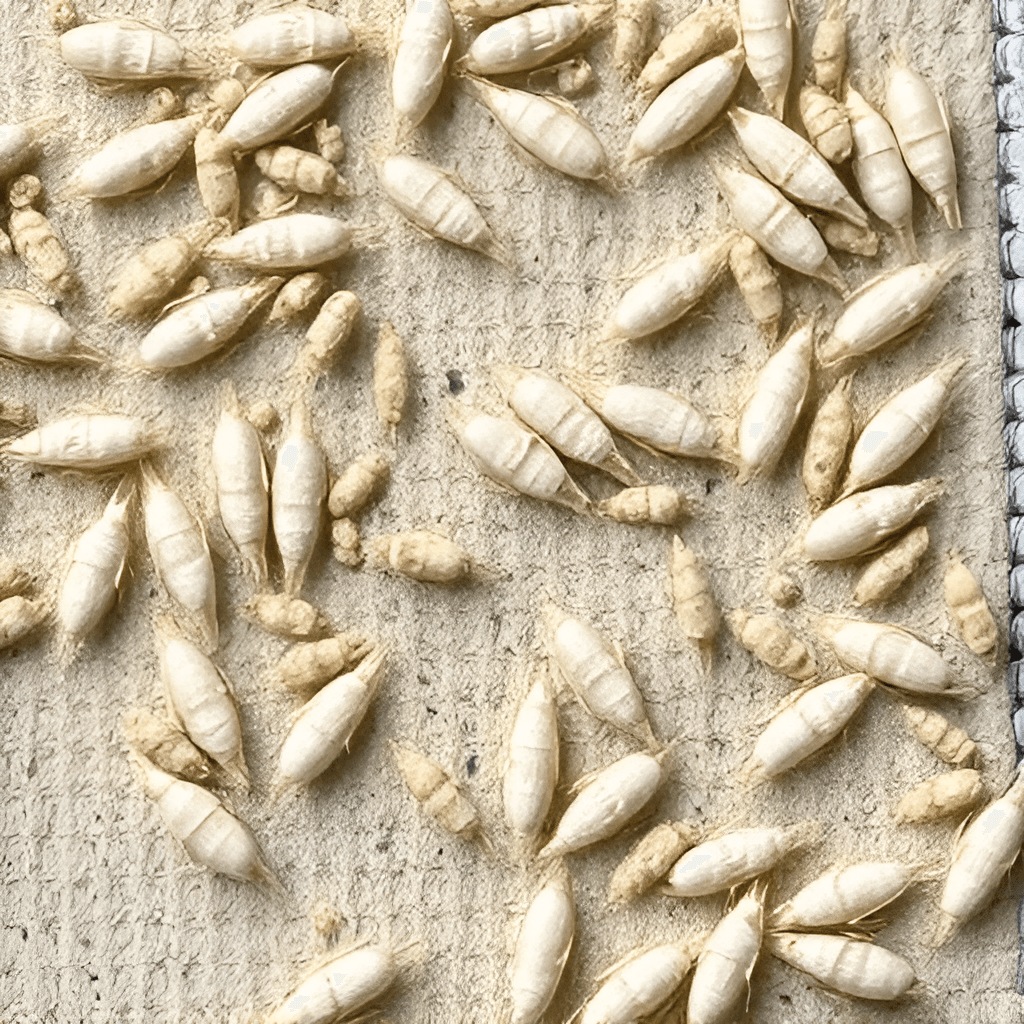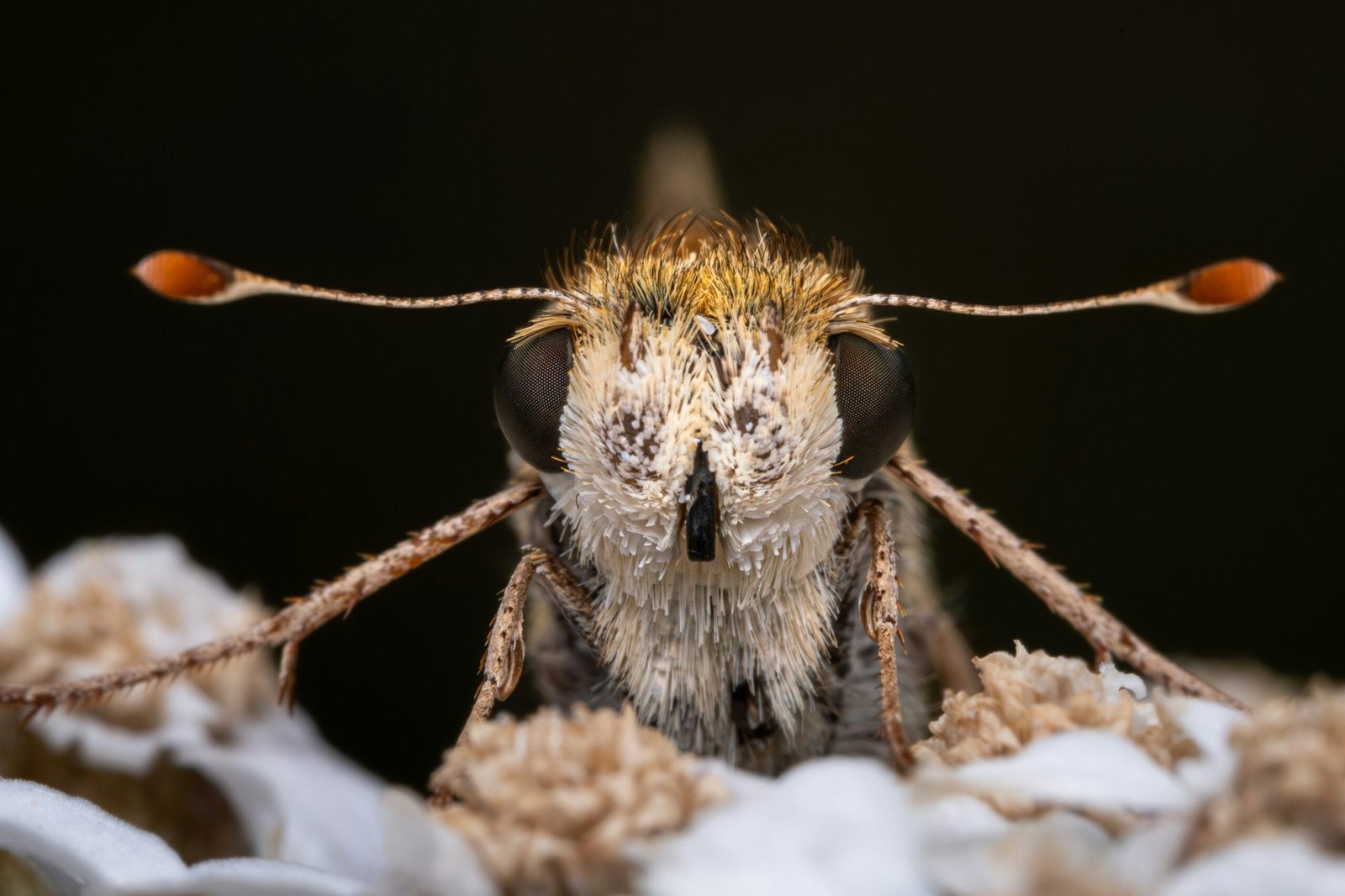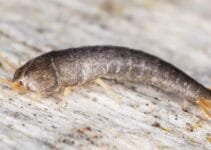Dust mites are microscopic pests commonly found in homes, especially in new constructions. They can trigger allergy symptoms, making effective control strategies essential. This guide explores the origins of dust mites, signs of infestation, and comprehensive cleaning and maintenance strategies to reduce their presence. Learn about the impact of humidity and temperature, innovative design ideas, and the debate between DIY solutions versus professional help. By understanding and managing these factors, homeowners can create a healthier living environment and minimize dust mite populations.
Introduction to Dust Mites
Dust mites are microscopic arachnids that are commonly found in households around the world. Measuring about 0.3 millimeters in length, these creatures are not visible to the naked eye, yet they play a significant role in the indoor ecosystem. Dust mites predominantly feed on organic debris, particularly the flakes of skin that humans and pets shed, which makes residential environments especially conducive to their proliferation. The presence of dust mites can lead to various health concerns, particularly for individuals with allergies or asthma, as their waste products and body fragments can trigger allergic reactions.

In new buildings, the risk of dust mite infestation may be heightened due to a number of factors. Newly constructed homes often contain materials that promote humidity, such as plaster and paint, which can create an ideal environment for dust mites to thrive. Additionally, dust particles may accumulate during the construction phase, providing a ready food source for these organisms. As people begin to occupy new buildings, the presence of moisture from daily activities, such as cooking and bathing, further exacerbates the situation, fostering conditions that allow dust mites to multiply rapidly.
Read this post and do not forget to check out the YouTube channel “WCCO – CBS Minnesota.”
for more inspiration regarding other smart and clever ideas for your home interiors.
Let’s see one beautiful video from our channel:
Good Question: What Are Dust Mites? (video)
Given their tiny size and ability to hide in various materials, including carpets, upholstery, and bedding, dust mites can be challenging to eliminate entirely. Understanding their biology and the conditions that support their survival is essential for combatting an infestation effectively. Through careful management of indoor humidity, along with implementing cleaning and maintenance strategies, homeowners can significantly reduce the presence of dust mites in their living spaces. This post will delve further into the origins of dust mites in new constructions and explore effective methods for control.
Where Do Dust Mites Come From?
Dust mites are microscopic organisms that thrive in warm, humid environments, making them a common nuisance in residential and commercial settings. Understanding the origins of dust mites is crucial, particularly in new buildings where various factors contribute to their proliferation. One primary source of dust mites in newly constructed properties is the materials used during construction. Building materials such as drywall, insulation, and carpeting can harbor microscopic particles, providing an ideal habitat for dust mites.
Construction dust is another significant contributor to dust mite infestation in new buildings. During the construction phase, dust accumulates from materials like wood, concrete, and other particulate matter. This dust can carry organic matter, including skin cells and hair, which serve as food for dust mites. Additionally, if a building has not been properly cleaned post-construction, residual dust can create conducive conditions for dust mite growth.
Moisture is also a critical factor in the life cycle of dust mites. New buildings can be susceptible to retaining moisture, especially if they are not well-ventilated. Water intrusion during or after construction can lead to damp areas that promote dust mite proliferation. Moreover, humidity levels inside the property can escalate due to construction-related activities, such as drying paint or curing concrete, creating an atmosphere ideal for dust mites to thrive.
Another pertinent source of dust mites includes previously owned furniture or textiles brought into the new building. Even if a structure is brand new, second-hand items may introduce existing dust mite populations. Previous occupants contribute to this issue as well; they may have left behind materials that still contain these insects or their eggs. Thus, understanding where dust mites come from is essential in developing effective strategies to combat them in new constructions.
Signs of Dust Mite Infestation
Dust mites are microscopic creatures that can thrive in various environments, particularly in new buildings where construction materials may provide ample sustenance. Identifying a dust mite infestation early is crucial to mitigating its impact, especially for those prone to allergies. There are several observable signs that may indicate the presence of these pests.
One of the primary indicators of a dust mite infestation is the onset of allergic reactions among residents. Common symptoms include sneezing, runny or stuffy noses, itching of the eyes, and a persistent cough. Individuals who suffer from asthma or other respiratory conditions may experience exacerbated symptoms, such as wheezing or difficulty breathing. These reactions could arise after exposure, particularly in areas known to harbor these mites, such as bedrooms, living rooms, and carpets.
In addition to physical symptoms, another sign of dust mite activity is the increased presence of dust, particularly in areas that are often neglected during cleaning routines. Dust accumulation can foster an environment conducive to dust mites. Furthermore, individuals may report that cleaning these areas seems to have little effect on reducing their allergy symptoms, which can be frustrating and lead to confusion regarding the source of their discomfort.
Personal accounts often illustrate the challenges faced by those living in newly constructed buildings. For instance, a family moving into a freshly built home noticed a persistent cough among their children, which worsened during the night. After a thorough investigation, dust mites were identified as the culprits, highlighting how these pests can easily infiltrate new living spaces. It is critical for residents to remain vigilant for these signs, as early detection and intervention can help alleviate the adverse effects of dust mites in one’s home.
The Role of Humidity and Temperature
Dust mites are microscopic creatures that thrive in environments where specific conditions, primarily humidity and temperature, are conducive to their survival. These small insects flourish in warm, humid environments, making temperature control and moisture management crucial in new buildings. Ideal conditions for dust mites typically feature relative humidity levels between 70% to 80%. At these levels, the moisture content supports their reproduction and sustenance, as dust mites primarily feed on organic debris such as skin flakes, hair, and even fungi.
The temperature further contributes to the proliferation of dust mites. They prefer a warm environment, with the optimal temperature range for their development being between 68°F to 77°F (20°C to 25°C). Within these ranges, dust mites can reproduce rapidly, leading to significant populations in a relatively short period. Consequently, the combined effects of high humidity and warm temperatures create an almost ideal habitat for these pests, making it essential to take steps to mitigate these factors in new buildings.
To combat the favorable conditions for dust mites, several strategies can be implemented. First, utilizing dehumidifiers can significantly reduce indoor humidity levels to below 50%, which is less conducive for dust mite survival. Additionally, ensuring adequate ventilation within living spaces promotes airflow and reduces moisture buildup. The use of air conditioning systems can also help maintain a cooler, drier environment, deterring dust mites from establishing themselves. Regular cleaning and maintenance habits, such as using allergen-proof mattress and pillow covers, and frequent washing of bedding in hot water, further assist in controlling dust mite populations. By understanding and managing humidity and temperature, new buildings can effectively reduce the prevalence of dust mites, promoting a healthier living environment.
Cleaning and Maintenance Strategies
Dust mites thrive in environments rich in moisture and organic matter, making effective cleaning and maintenance strategies essential for minimizing their presence in new buildings. Regular cleaning routines can significantly reduce dust mite populations, thereby improving indoor air quality and overall health. It is advisable to establish a comprehensive cleaning schedule that includes both daily and weekly tasks.
Start with dusting surfaces using damp cloths or microfiber materials, which are more effective than dry dusters at trapping dust and allergens. Make sure to focus on frequently overlooked areas such as ceiling fan blades, baseboards, and behind furniture. Vacuuming carpets and upholstery with a high-efficiency particulate air (HEPA) filter is crucial. It is recommended to vacuum at least once a week, as this will help remove dust and debris, including dust mites. Consider using vacuum cleaners equipped with HEPA filters or special mite removing attachments for optimum effectiveness.
Bed linens and bedding are common habitats for dust mites. Washing bed sheets, pillowcases, and duvet covers in hot water (at least 130°F/54°C) once a week is essential. Additionally, encasing pillows and mattresses in dust-proof covers can create a physical barrier that prevents dust mites from infiltrating these items. If possible, consider replacing carpets with hard flooring options, as carpets can be perpetual hosts for dust mites and allergens.
Maintaining optimal humidity levels is another effective method to combat dust mites. Aim to keep indoor humidity between 30% and 50% to discourage their growth. Using a dehumidifier in more humid areas can be significantly beneficial. Furthermore, incorporating houseplants that help purify the air can also create a healthier living environment.
Cleaning does not have to be a daunting task. Engaging family members in creating a cleaning playlist or setting a timer for short cleaning bursts can add an element of fun. By establishing practical cleaning and maintenance strategies, you can effectively combat dust mites and enjoy a cleaner, healthier home.
Innovative Design Ideas to Reduce Dust Mites
Creating spaces that minimize the presence of dust mites is essential for enhancing indoor air quality and overall well-being. Several innovative design ideas can effectively reduce these pests, employing a blend of aesthetics and functionality. One of the foremost strategies involves the selection of hypoallergenic materials. Opting for synthetic fibers in upholstery and carpets can significantly decrease dust mite populations, as these materials do not provide conducive environments for mite habitation. Additionally, washable fabrics should be prioritized, allowing for routine cleaning to eliminate potential allergens.
Incorporating efficient airflow designs is another critical aspect when planning a new building. Ensuring proper ventilation through strategically placed windows and air ducts not only augments air circulation but also reduces humidity levels, creating an unfavorable habitat for dust mites. Implementing exhaust fans in bathrooms and kitchens to expel moisture is also beneficial. Furthermore, utilizing dehumidifiers in high-humidity areas can enhance the effectiveness of these ventilation efforts.
Selecting the right furnishings is equally important. Furniture with minimal upholstery and smooth surfaces can help in easy cleaning and maintenance. For example, opting for wooden or metal furniture instead of heavily upholstered items limits dust accumulation. Additionally, keeping clutter to a minimum and choosing multi-functional furniture that encourages organization can prevent dust mites from finding shelter.
Beyond materials and furnishings, creative landscaping inside buildings can contribute to reducing dust mite populations. Incorporating indoor plants that are known for air purification can help create healthier indoor environments. Moreover, utilizing permeable materials in flooring can further enhance airflow and mitigate moisture retention. By blending style and practicality, these design ideas exemplify how thoughtful planning can effectively combat dust mites in new buildings, leading to healthier living spaces.
DIY Solutions vs Professional Help
When faced with the persistence of dust mites in new buildings, homeowners are often caught in a dilemma: should they tackle the issue themselves using do-it-yourself strategies or seek assistance from professional pest control services? Each approach has its distinct advantages and disadvantages worth considering.
DIY solutions may appear appealing due to their cost-effectiveness. A variety of over-the-counter products are readily available, ranging from sprays to powders specifically designed to combat these microscopic pests. Simple preventive measures, such as frequent vacuuming with HEPA filters, maintaining low humidity, and washing bedding in hot water, can also contribute significantly to minimizing dust mite populations. Some homeowners even resort to humorous tactics, such as using essential oils to transform their living spaces into fragrant fortresses against these pesky invaders. However, relying solely on DIY methods may not always yield lasting results and can sometimes lead to frustration, as experienced by one homeowner who once believed that a strategically placed lavender spray would ward off dust mites, only to discover that the mites had other plans.
On the other hand, enlisting the expertise of professional pest control offers a more comprehensive and long-term solution. Trained specialists possess advanced knowledge and tools to identify not only the presence of dust mites but also the underlying causes contributing to their proliferation in indoor environments. Furthermore, professionals can implement targeted treatments that are often more effective than typical store-bought remedies. A cautionary tale to consider involves a misguided attempt by a DIY enthusiast, who, while trying to eliminate a dust mite issue, inadvertently created an optimal breeding ground through over-watering indoor plants, leading to a more significant infestation.
Ultimately, determining when it is time to call for expert help depends on the severity of the infestation and the homeowner’s comfort level with tackling such issues independently. For persistent problems or overwhelming infestations, professional assistance may prove to be the most practical option for achieving a dust mite-free environment.
Myth-Busting: Common Misconceptions About Dust Mites
Dust mites are often misunderstood creatures that provoke a variety of myths and misconceptions. One common fallacy is that dust mites are too small to be seen by the naked eye. While they are indeed microscopic, with an average size of about 0.2 to 0.3 millimeters, this does not mean they are entirely invisible; instead, they are simply difficult to detect without a magnifying device. Think of them as the stealthy ninjas of the insect world, lurking in your bedding and carpets—out of sight, but not out of mind.
Another prevalent myth is the belief that dust mites can be completely eliminated from our homes. Unfortunately, this is akin to thinking you can completely eliminate your shadow. Dust mites thrive in environments rich in organic matter like dead skin cells and are often found in bedding, upholstery, and carpets. While it is indeed possible to significantly reduce their populations, particularly through regular cleaning and using protective covers, the complete eradication of these tiny house guests is highly unlikely.
Lastly, there is a humorous notion that dust mites are the cause of all allergies. While they are a known allergen, they are not the sole culprit of allergic reactions. Other factors, such as pollen, pet dander, and mold, also play significant roles in our allergy woes. So, while it is tempting to blame everything on our tiny eight-legged friends, they aren’t the sole source of our sniffles and sneezes. Understanding these misconceptions can lead to more effective ways of managing dust mite populations in our living spaces.
Taking Action: A Recap on Combating Dust Mites
Combating dust mites effectively begins with understanding their habitat and the steps we can take to create a healthier living environment. Dust mites are minuscule arachnids that thrive in warm and humid conditions, typically found in bedding, upholstery, and carpets. To mitigate their presence, it is essential to focus on practical actions that can significantly reduce dust mite populations. Regular cleaning is pivotal; vacuuming carpets and upholstery with a HEPA filter-equipped vacuum cleaner can remove mite allergens and debris.
Additionally, maintaining lower humidity levels is crucial in preventing dust mite infestations. Using dehumidifiers in areas prone to moisture, such as basements and bathrooms, can help maintain humidity at around 30-50%. Washing bedding and curtains in hot water regularly, ideally at temperatures above 130°F (54°C), also helps eliminate dust mites. Furthermore, covering pillows and mattresses with allergen-proof encasements can offer a protective barrier, thus reducing exposure to these pests.
Incorporating air purification systems with HEPA filters can also improve indoor air quality by trapping dust mites and their allergens. When selecting materials for new construction or renovations, consider using hypoallergenic products that resist dust accumulation. Besides structural changes, fostering personal awareness of the materials and furnishings that attract these pests can lead to better choices, resulting in healthier homes.
Ultimately, the fight against dust mites requires both knowledge and proactive measures. Engaging actively with your living space fosters a healthier environment. By implementing the strategies discussed, individuals can take control of their surroundings, resulting in improved indoor air quality and enhanced well-being. Awareness and action not only minimize dust mites but also contribute to a more pleasant living atmosphere overall.
Other related posts from our website:
https://howtobuildahouseblog.com/silverfish-6-simple-tips-to-combat-the-pest/
https://howtobuildahouseblog.com/how-to-keep-pests-out-for-the-winter/
We sincerely hope that our video and post can help you.
Please, write your opinion in the comment section and do not forget to subscribe to our channel if you are new to our YouTube channel.
See you soon at another post.
Bye, Bye



No Responses